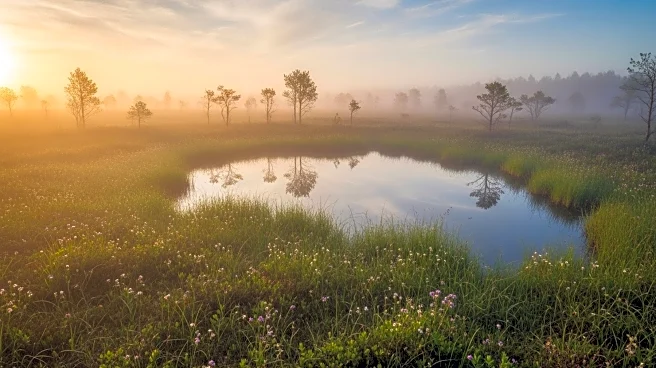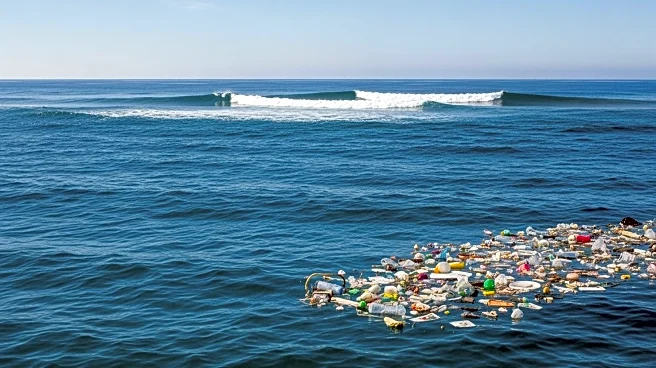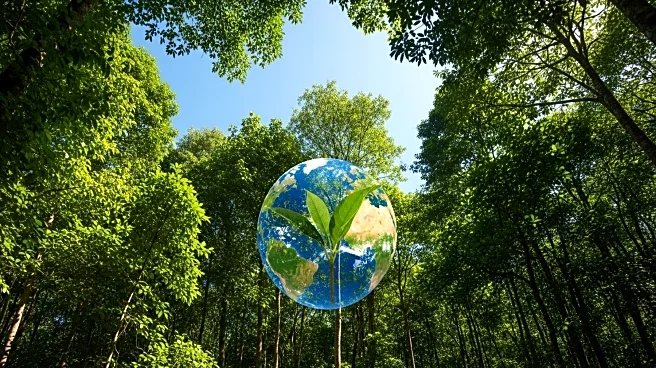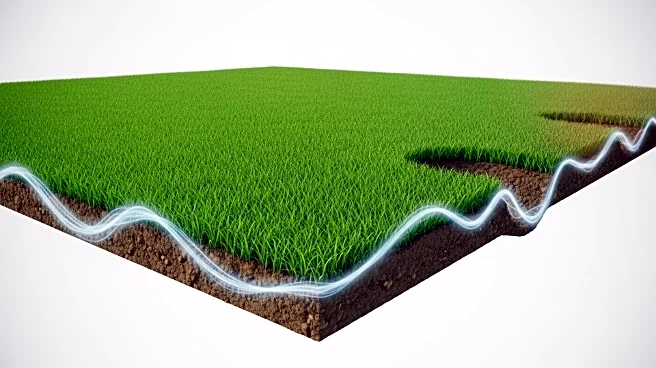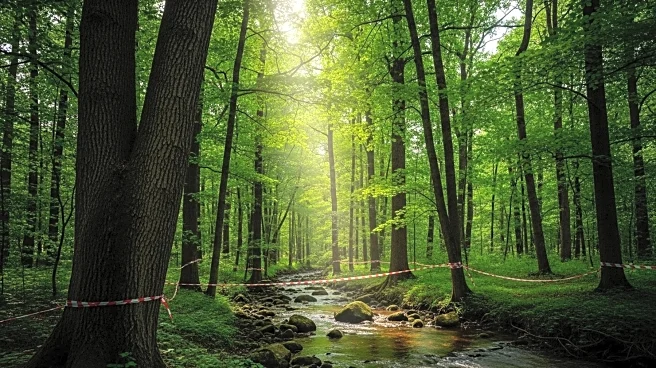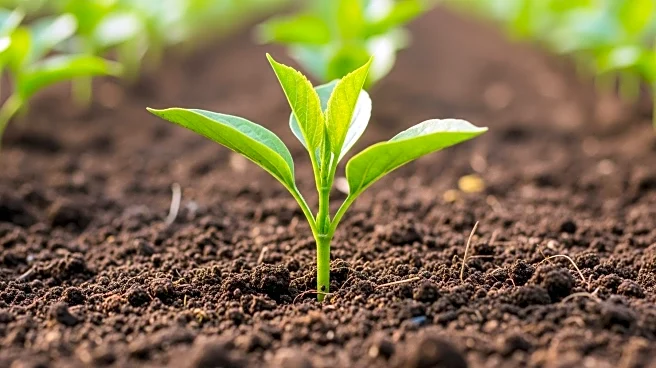What's Happening?
Peatlands are being recognized for their vital role in climate change mitigation due to their ability to act as significant carbon sinks. These ecosystems develop under waterlogged conditions, leading to the accumulation of peat, which sequesters atmospheric carbon. However, disturbances such as drainage or land conversion can turn peatlands into sources of greenhouse gas emissions. Research is being encouraged to advance understanding of peatland ecosystems, their biodiversity, and ecological functions. This includes exploring their role in carbon storage, greenhouse gas fluxes, and the impacts of land use changes.
Why It's Important?
The protection and restoration of peatlands are critical for global climate change mitigation strategies. As natural carbon sinks, peatlands help reduce atmospheric carbon levels, contributing to efforts to combat climate change. Their degradation can lead to increased greenhouse gas emissions, exacerbating environmental challenges. Understanding peatlands' ecological functions and responses to environmental changes is essential for developing effective conservation policies. This research supports biodiversity conservation and informs land management practices that can enhance carbon sequestration.
What's Next?
Future research will focus on mapping and monitoring peatland degradation, modeling ecosystem functions, and developing climate change mitigation strategies. Efforts to protect and restore peatlands will be crucial in maintaining their role as carbon sinks. Policymakers and environmental organizations are expected to prioritize peatland conservation in climate action plans. Collaboration between scientists, governments, and communities will be necessary to implement sustainable land use practices and prevent further degradation.
Beyond the Headlines
The cultural and ethical dimensions of peatland conservation highlight the importance of integrating traditional knowledge and community involvement in environmental management. Peatlands are often located in areas with rich cultural heritage, necessitating respectful and inclusive conservation approaches. The long-term sustainability of peatland ecosystems depends on balancing ecological preservation with socio-economic development. This underscores the need for interdisciplinary research and policy frameworks that address both environmental and human needs.
